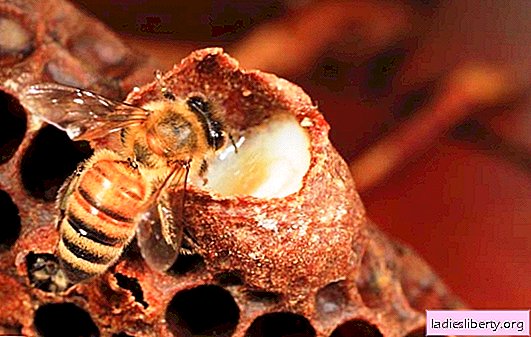
Pruritus itch is one of the most painful physiological manifestations. Each of us experienced it at least several times during our life.
Not always even severe skin itching is a manifestation of diseases, however, depending on the intensity, nature and localization of the skin itch, one can speak of a particular pathology.
What is itchy skin?
A clear scientific definition of pruritus does not exist. You can formulate it only approximately. Skin itching is called local or general discomfort, causing the need to comb the irritated area. Skin itch is not an independent disease, but only a specific manifestation of a number of pathological processes.
An uncomfortable sensation on the skin always accompanies this or that disease of the dermal integuments or internal organs. The list of pathologies accompanied by this symptom is so long that in order to rule out the disease and clarify the diagnosis, it will be necessary to consult several doctors at once.
The mechanism of development of skin itch
Regardless of the nature of the process that caused itching, its essence is to irritate the network of nerve endings that the upper and middle layers of the skin are rich in. This unpleasant sensation has much in common with the sensation of pain. In other words, to understand "why it itches so much," you need to understand the structure of the skin.
The skin consists of three layers: the upper (epidermis), middle (dermis) and deep (hypodermis). Nerve endings penetrate all layers of the skin, but most of them in the epidermis. This explains the research, according to which, with serious damage to the upper layer, the sensitivity of the skin decreases to absolute zero. In this case, both the itching sensation and pain sensations are dulled (for example, during prolonged traumatic combing, deep burns, etc.).
Nerve endings located in the skin structure together with the neurons of the spinal cord and brain form a single system. Within the system, the processes of the neurons of the skin layers act as receptors. In response to receptor stimulation, the brain generates a reverse signal, which is defined by the person as an itch. It has already been said that itching is similar in nature to pain. Both pain and a desire to comb the skin form a stable dominant in the brain. That is, these sensations dull all others, speaking to the fore, and require their primary elimination.
Thus, the reflex is the basis of the mechanism of itching. As researchers suggest, it evolved during evolution to quickly eliminate all extraneous agents acting on human skin. Because they can be dangerous.
Irritants affecting the skin and causing itching are not always external. Often we can talk about endogenous processes. In some cases, itchy skin can be caused by special substances that have received the general name of itch mediators (histamine, etc.). When released, they affect the nerve endings directly in the skin structures, and thus the discomfortable sensation develops without the participation of external stimuli.
Causes of pruritus
There are many causes of unpleasant skin sensations. They can all be divided into several categories:
- diseases and other pathological conditions;
- injuries and parasitic lesions;
- hygiene violations.
Diseases
1. Neurodermatitis. It is a neurological disease with skin manifestations. The mechanism of development is not fully understood. The course of the disease is constant or intermittent, recurrent. Exacerbations are caused by psychosomatic causes (nervous shocks, stressful situations can be a trigger mechanism). It is noticed that neurodermatitis is more often formed in people with a special psychological profile (overly irritable, quick-tempered, shy and timid, etc.).
Symptoms: severe itching of the skin, especially after suffering stress. As the nervous tension decreases, the discomfort on the skin subsides.
Treatment specialists: neurologist, dermatologist.
2. It is important to distinguish atopic dermatitis from contact dermatitis. Contact dermatitis develops as a result of frequent friction and pressure on certain areas of the skin (bracelet from a watch, etc.). However, in some cases, contact dermatitis may be the result of an allergic reaction (for example, on an adhesive plaster).
Symptoms: manifest as neurodermatitis. A rounded red spot is formed on the skin at the site of the lesion. After 5-15 minutes, unbearable itching begins.
Treatment specialists: dermatologist.
3. Allergic reaction. In the overwhelming majority of cases, the cause of itching lies in allergies (or pseudo-allergies). Any type of allergy (whether food, etc.) can affect the skin. The reason lies in the destruction of mast cell-basophil complex substances "antigen-antibody" and the subsequent production of an itch mediator - histamine. Histamine violates the integrity of the cellular structures of the skin, resulting in a painful itching of the skin.
In some cases, we can talk not about allergies, but about pseudo-allergies. The difference is one. Pseudo-allergy is due to the placebo effect and is psychosomatic in nature. That is, the patient is sure that he is allergic to this or that substance. As a result, when this substance is injected, electrical stimulation of the skin receptors occurs by signals from the brain and itching begins.
Symptoms: similar to those of contact dermatitis, which can also be allergic in nature.
Treatment specialist: allergist.
4. Xerosis. Associated with insufficient secretion of sebaceous glands. The skin is too dry and more susceptible to damage. The reason lies in the use of aggressive chemicals (soaps, high-alkaline detergents, etc.). Another reason - hormonal disruptions.
Symptoms: dry skin, cracks, burning sensation, redness and itching on the skin.
The attending specialist: a dermatologist, endocrinologist (if skin problems are associated with metabolism).
5. Diabetes. Diabetes mellitus can also cause itching. Increased sugar levels lead to rapid dehydration. As a result, an insufficient amount of secretion of the sebaceous glands is produced, the skin becomes dry and cracks.
Symptoms: similar to the symptoms of xerosis, but the manifestations are associated with endocrine causes and are more pronounced (itching and peeling of the skin are present, etc.)
Treatment specialists: dermatologist, endocrinologist.
This is only a small part of the disease. However, in aggregate, these pathologies cause itching in 90% of clinical cases.
Skin injuries, whether chemical or thermal burns, microcracks from low temperature, etc., can cause discomfort. But you need to make a reservation. Receptors are only excited if the skin is not too damaged.
As it was said, the main part of the receptors responsible for itching is concentrated in the epidermis. If there are deeper skin lesions, the itching sensation is replaced by a pain sensation.
Another case is skin damage insects (mosquito bites, bites of gadflies and stinging insects). In this case, itching occurs as a result of a local immune response, designed to destroy foreign substances injected under the skin.
Most common parasitic lesionThe disease is scabies. It is provoked by scabies mites. The basis of the development is an allergic reaction to the mite products (eggs, saliva, etc.).
Symptoms are typical for local manifestations of allergies. The only difference is that the lesions are covered with watery bubbles.
Unfortunately, until recently, the calmed-down disease has re-activated and the number of people suffering from it is growing.
Types of pruritus
In medical practice, itching is divided into two types: local and generalized.
Generalized itching
Generalized itching is called an uncomfortable sensation on the skin, the exact localization of which is impossible to determine.
Discomfort is felt all over the skin, may be wandering.
Generalized (or general) itching may occur for the following reasons:
allergic reaction;
diseases of internal organs (liver, kidney).
psychosomatic process.
As a result of an allergic reaction, both a separate skin area and large areas can suffer.
Diseases of the internal organs cause metabolic disorders and the development of other (except histamine) itch mediators, including inflammatory ones. The so-called. Giardiasis (parasitic liver damage) and other pathologies.
Local itching
Local pruritus is divided into types, depending on the place.
Itchy scalp
Covers the scalp. Scalping can cause itching: diabetes mellitus, contact dermatitis (for example, as a result of contact of the scalp with a woven material that is allergic to humans), various types of allergic reactions, psoriasis. Separately should be called pediculosis (lice).
Itchy skin
It is observed in most diseases. In addition to the above neurodermatitis and eczema.
1. Pruritus pruritus and itching of the skin caused by poor hygiene.
Often, itchy skin can result from inadequate hygiene. The skin regularly undergoes transformations and changes. Old skin scales are exfoliated. It is important to remove them in time from the surface of the body and head. If this does not occur, the old layers of the skin impede the normal production of sebum. Finding no way out, the secret of the sebaceous glands clogs the ducts.
In addition, the old skin, covering the surface of the body, forms a horny texture. It perfectly retains dirt and dust from the air. Such a "complex" (skin scales, dirt, fat) is an excellent nutrient medium for pathogenic microorganisms and fungi. And those and others in the course of their life produce a huge amount of active substances. These substances are toxins that violate the integrity of the skin, causing the appearance of cracks and microtraumas. Allergy sufferers local reaction to these substances will be even more pronounced.
2. Diagnosis of itchy skin
Diagnosis of pruritus is complex and should include the necessary instrumental and laboratory studies. The essence of the diagnosis is to exclude diseases of the liver, kidneys, endocrine pathologies, blood pathologies, parasitic lesions.
Diagnostic measures include:
- Collecting anamnesis;
- Laboratory tests (blood, urine, feces, allergy tests, etc.);
- Instrumental studies (ultrasound of the liver, kidney to detect changes, etc.).
The initial survey (anamnesis collection) is needed to establish how the process is going, how long it began, whether there are hereditary diseases and other important factors.
Laboratory studies are complex and numerous. Thus, a blood test will allow to establish the concentration of eosinophils (which, conventionally speaking, are markers of an allergic process), sugar levels. Urinalysis is necessary to establish the presence of sugar (a frequent occurrence in diabetes).
The analysis of feces eliminates parasitic damage by pinworms (it is often these helminths that cause itching of the skin in the anal area).
Allergic tests are prescribed to determine the products and substances to which the immune response of the body is the strongest. Interaction with them causes severe allergic reactions, accompanied by unbearable itching of the skin.
Another diagnostic event - the fence scraping from the skin. This method is necessary to exclude fungal and infectious skin lesions.
3. Treatment of skin itching
Specific treatment is aimed at eliminating the symptom. For these purposes, prescribed drugs in three groups:
- antihistamines;
- drugs-desensitizers;
- antipruritic drugs.
The most common cause of pruritus is allergy. Allergic manifestations are eliminated by blocking the action of the histamine mediator on the body. Antihistamines are prescribed (Cetrin, Suprastin, Tavegil, etc.). Appointed both orally and in the form of intramuscular injections.
Desensitizing drugs aimed at reducing the body's sensitivity to allergens (diazolin, diphenhydramine).
Antipruritic - most often produced in the form of ointments for external use (Advantan, Akortin, etc.).
In more severe cases, hormonal drugs are prescribed (glucocorticosteroids and others).
If itching is due to psychosomatic causes, sedatives (sedatives) are prescribed. Among them are valerian, motherwort, Novo-Passit.
Dosage and specific drugs in the complex should be chosen exclusively by a doctor. Self-medication is unacceptable and can cause serious health consequences.
4. Prevention of skin itching
Preventive measures are specific. In each case, the complex of such events is individual. However, as was said, the main cause of itching remains allergic diseases (including dermatitis, eczema, etc.).
In any case, you can give some general recommendations to those who want to make their lives easier and prevent the development of such an unpleasant symptom.
- In no case should we neglect hygienic procedures. However, too frequent washing of the head and skin disrupts the normal state of the skin and the secretion of sebum. The skin becomes dry, and this is a direct path to discomfort. It is recommended to wash no more than 1 time in 2 days without the use of aggressive chemicals.
- Contact with aggressive chemicals should be excluded. Detergents should be used strictly in accordance with the recommendations of the manufacturer.
- It is necessary to adhere to a hypoallergenic diet. The severity of the diet depends on the severity of individual body reactions.
Do not immediately panic if you or the baby "itch badly."
Itching is a standard reaction of skin receptors to external and internal stimuli. It happens that the reflex reaction takes a painful course, then it is necessary to take immediate action.
If we are talking about the violation of the rules of hygiene - a person can easily cope on their own. But when itching is caused by pathological processes, competent medical care is indispensable. In the arsenal of modern medicine, the mass of diagnostic and treatment methods. However, it is impossible to use pills by yourself, to smear the affected areas with ointment or something else. A patient with such actions risks aggravating his already difficult situation.











